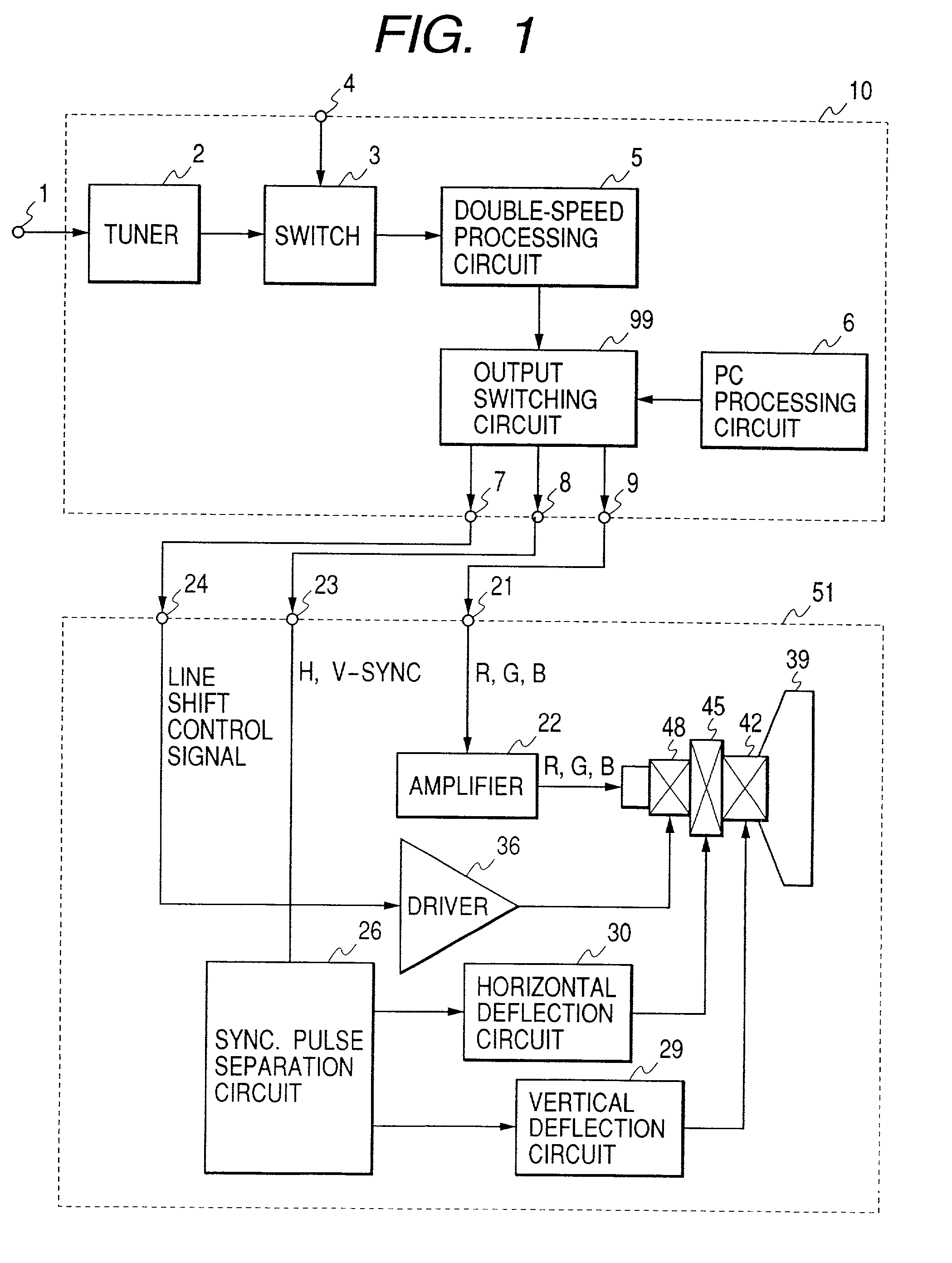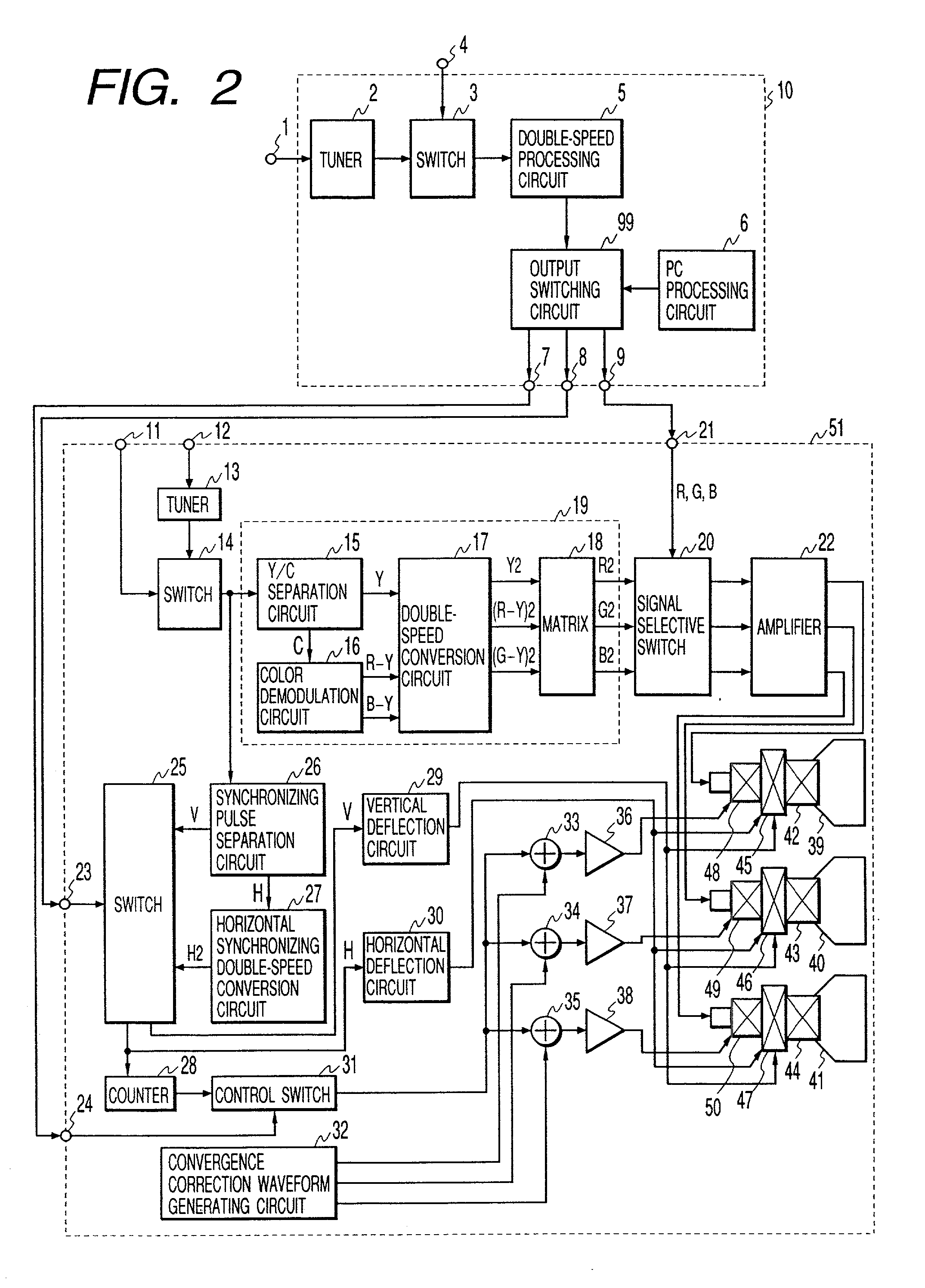Image display apparatus and personal computer for displaying personal computer signals and broadcast signals
a technology for displaying apparatus and personal computers, applied in the direction of television systems, instruments, color signal processing circuits, etc., can solve the problems of vertical resolution degradation, line and even-field scan lines will substantially overlap, and the vertical resolution of this image will declin
- Summary
- Abstract
- Description
- Claims
- Application Information
AI Technical Summary
Problems solved by technology
Method used
Image
Examples
Embodiment Construction
[0030] Before beginning a detailed description of the subject invention, mention of the following is in order. More particularly, when appropriate, like reference numerals and characters are used to designate identical, corresponding or similar components in differing figure drawings.
[0031] Hereinafter, description will be made of embodiments according to the present invention with reference to the drawings. More specifically, FIG. 1 is a block diagram showing a first embodiment of an image display system according to the present invention, i.e., as applied to a cathode ray tube (CRT) display device. More particularly, the FIG. 1 embodiment is composed of a device 10 including a display signal generator such as a personal computer, and a device 51 including a display unit. The device 10 preferably includes an antenna input terminal 1, a tuner 2, a switch 3, an external video input terminal 4, a double-speed processing circuit 5, a PC processing circuit 6, an output switching circuit...
PUM
 Login to View More
Login to View More Abstract
Description
Claims
Application Information
 Login to View More
Login to View More - R&D
- Intellectual Property
- Life Sciences
- Materials
- Tech Scout
- Unparalleled Data Quality
- Higher Quality Content
- 60% Fewer Hallucinations
Browse by: Latest US Patents, China's latest patents, Technical Efficacy Thesaurus, Application Domain, Technology Topic, Popular Technical Reports.
© 2025 PatSnap. All rights reserved.Legal|Privacy policy|Modern Slavery Act Transparency Statement|Sitemap|About US| Contact US: help@patsnap.com



